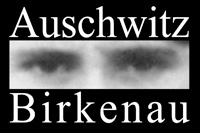




BIIe
(German: Bauabschnitt IIe – construction segment 2, sector e)
So-called Zigeunerlager (German: Gypsy camp). Established as the first of the six camps successively put into operation in so-called second construction segment of Birkenau. The first Roma were sent to the camp in February 1943. The deportees were placed together in the barracks, in entire family groups.
The camp was made up of 32 residential barracks, together with utility buildings, washrooms and latrines. One of the barracks was set aside for Dr. Josef Mengele, who conducted medical experiments there.
Roma families were not separated in the camp, they were permitted to wear civilian clothing and only limited numbers of Roma were forced to labor. However, the starvation food rations, terrible living conditions (hygiene) and the spread of contagious diseases (typhus) resulted in very high mortality in the “Gypsy camp”, reaching over 60%.
In total, during 18 months of its existence, about 21,000 men, women and children (including 378 born in Birkenau) were registered in the camp. The camp was liquidated on the night of August 2/3, 1944, when the last 3,000 men, women, and children were murdered by the Germans in the gas chambers.
